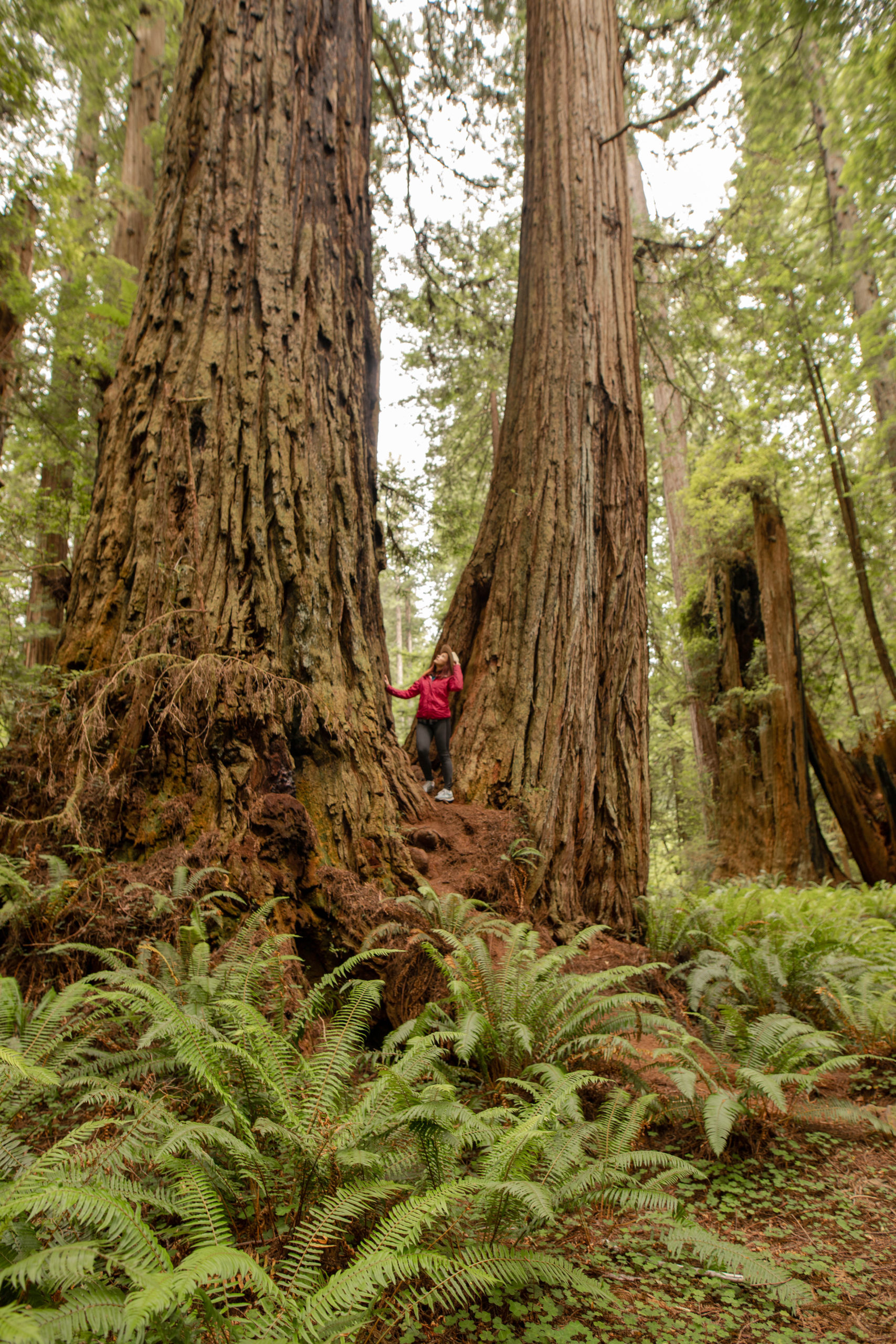Coastal California Redwoods
The California coastal redwoods (Sequoia sempervirens) are evergreen trees with a bright red-brown color and green pine needles, mostly located on the upper portion of the tree. These trees typically grow from 200 to 300 feet tall, with the tallest on record being 380 feet tall (The Smithsonian). These trees grow a large network of lateral roots, which support the tree's almost completely vertical growth. Currently, the population of coastal redwoods stands at around 5% of what their population used to be. At their height in the early 19th century, it is estimated that there were around 2 million redwoods. However, in 2024 that number has shrunk to around 150,000 redwoods (Save The Redwoods).
Coastal redwoods play a critical role in their ecosystem and, if taken away, all other organisms in their habitat would be greatly affected and most likely suffer. This is because coastal redwoods provide a habitat to a multitude of species including insects, fungi, birds, and even mammals. Redwoods also allow for a great amount of biodiversity by creating a unique environment for specialized animals that otherwise would not be able to thrive (National Park Service). These trees are also able to store large amounts of carbon dioxide, due to their massive size and impressive lifespan of over 2,000 years, which helps to lessen climate change.
Unfortunately, in the mid-nineteenth century, logging became a massive industry and within 50 years reduced the redwood population by around 95%. The redwoods were sought highly after due to their size and durability. Therefore the larger, older trees were the ones that got cut down in excessive quantities. This, in turn, made it so that new, younger redwoods did not have the older, more mature ones that allowed them to regenerate in ideal conditions. This also caused other invasive plants to take over areas in which mature redwoods had been cut down (The Smithsonian).
The coastal redwoods are a keystone species and without them, there would be impacts so large that even we, in Ohio, would experience them. The redwoods are a crucial part to mitigating the effects of climate change and store massive amounts of carbon to do so. The loss of the redwoods would also impact the economy, as they attract a large amount of tourism, and indigenous people, who find the trees extremely culturally significant.
There are many different ways in which people have started to address the growing concern of preserving the redwood forests of California. One of the most impactful ways in which people are helping is by creating protected areas for the redwood trees. These areas safeguard the trees and their ecosystems from external factors such as logging and development (Save The Redwoods). People have also started to practice prescribed burning, where the redwoods can be exposed to their natural conditions without causing catastrophic damage to surrounding areas.
Geographers and geospatial tools are essential when planning what conservation efforts should be enforced. GIS, satellite imagery, and aerial photography allow geographers to create informational maps of redwood forests, which can identify areas that need more conservation than others. These tools also help track how habitat conditions change over time and how healthy the forests are.
Ways that you can help the Coastal California Redwoods:
Monetary Donations: Donate to organizations that are dedicated to conserving the redwood forests to make sure that they do not go extinct such as Save The Redwoods, the National Park Service, or the Sempervirens Fund.
Volunteering: Volunteer at conservation groups in the redwood forests of the Sana Cruz Mountains region. This is not limited to physically helping the redwood forests directly, as conservation work also includes community education, social media campaigns, and data collection.
Responsible Furniture Consumption: Research where the wood is sourced when you buy new furniture or shop second-hand so that the amount of deforestation decreases.
Educate Others: Share information like this with other people that you know to educate them and make them aware of this dire situation. Many people would care and take more action than they are right now simply if they knew the extent to which the redwood forests are threatened.
Eco-friendly Lifestyle Choices: Lower your carbon footprint and waste output to reduce the amount of pollution that is created and then released into places like the redwood forests. Some specific ways that you can do this are by reducing gas car usage, supporting renewable energy sources, and being mindful of your consumption habits.
:max_bytes(150000):strip_icc()/Chandeliertree-5bc6b45946e0fb0026e80c81.jpg)



Comments
Post a Comment